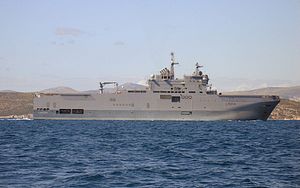In less than two weeks, the situation in the South China Sea has deteriorated at an accelerated pace: a joint Sino-Russian naval exercise; plans for Japan-U.S. joint patrols in the same area; Taiwan building anti-craft gun towers on Itu Aba; Jakarta trying to get U.S. help to upgrade its naval bases.
In all of these activities, the diplomatic waltz can make one dizzy. Even if nations caught in the territorial disputes share strong economic relations with China there is no doubt that, at the most opportune time, Beijing will take what it already considers as its territory, despite the disagreement of ASEAN members. Under this scenario, Southeast Asia countries must seek an ally, neutral but strong enough to have a voice at international level — an alternative option between China and the United States. France could fulfill this role to ensure peace and security; indeed, the French defense policy for the Asia-Pacific is already moving in this direction.
Only one European Defense Minister has presented at the Shangri La Dialogue for consecutive years, France’s Jean-Yves Le Drian. This year, he pushed for coordinated EU patrols in the South China Sea. If his June declaration surprised the audience then, it reflected French concern about the tensions in the East and South China Seas.
Among the first military forces in Europe, France is no stranger to the Asia-Pacific thanks to its overseas territories. According to the 2014 presentation of Asia-Pacific policy, France “has a duty to protect its citizens in Asia-Pacific countries whose number has increased by 220 percent over the last twenty years, to exceed 120,000 in 2012 – almost as large as the French population in sub-Saharan Africa.” Paris has developed a strategic relationship with most of countries in Asia and is linked to the Asia-Pacific through several treaties and political and security commitments.
It also has a toehold in Asian military deals, with France a part of 40 percent of Southeast Asian submarine contracts and 20 percent of naval projects. French strategic companies like DCNS, DCI, and Thalès are already active in Asia. French companies are set to supply submarines to Malaysia, 12 attack submarines to Australia, and 36 Rafale fighter jets to India — evidence enough that their military technology is much appreciated in this region. As a neutral superpower, Paris can help disentangle regional conflicts, even if Beijing is not very comfortable with intervention from outside Asia.
The French Navy is also used to deploying in the the region. So far in 2016, three vessels have visited the South China Sea and, according to Senator André Trillard, France actually has a surveillance frigate and a patrol boat at all times in New Caledonia. The French Navy is the only European military force deployed in the South China Sea. It will not be difficult for Paris to ensure a “regular and visible presence.” France’s Military Programming for 2014-2019 planned €162,4 billion ($181 billion) in defense spending, with a substantial proportion for the Navy to ensure oceanic deterrence, according to Trillard. From 2024-2025, the French Navy will accelerate its development to “contribute to peace and international security in the world, and to pay a particular attention on the security of the Indian Ocean and on the control of risks in South Asia,” as specified in the 2014 Military Programming Law. With six nuclear-powered submarines (SSNs) and four ballistic missile submarines (SSBNs) equipped with long-range nuclear warhead missiles, there’s no doubt that French Navy’s deterrent force will be heard. But, as specified by President Francois Hollande, “France will not go it alone.” European approval is needed.
That being said, the picture is not entirely rosy. From the Bratislava summit, Hollande called for a European joint force. But with European defense wracked by the Brexit, rebuilding the defense structure may need time. France and Germany together want to put Europe back on track and gave themselves six months to launch a new program. This should include the rebuilding of European forces and a roadmap for European defense for the coming years. We are actually at the turning point of a new era with the Brexit, the possible end of Hollande’s presidency, and Angela Merkel’s weakened position after the last elections. Furthermore, the EU has to deal with tension over migrants.
However, as Michael John Williams of New York University pointed out, “Terrorism, a belligerent Russia, and the refugee crisis are no excuses for Europe forgetting its international duties.” Time is running out and the upcoming weeks and months will be crucial. The U.S. “Pivot to Asia” policy accelerated the Sino-Russian alliance and the apparent loss of the Philippines, Washington’sclose ally since 1951, has further undermined the position of the United States. The future of U.S. policy is also uncertain, with the end of Obama era less than four months away and the possibility of an isolationist policy under the next U.S. president.
Now is the best time for France and for EU to strike while the iron is hot in Asia. It seems that the last update to the French Military Programming Law intends to do so.
Quoc-Thanh Nguyen has a PhD in Maritime Studies and is an IrAsia Associate member at Aix-Marseille University, France.

































